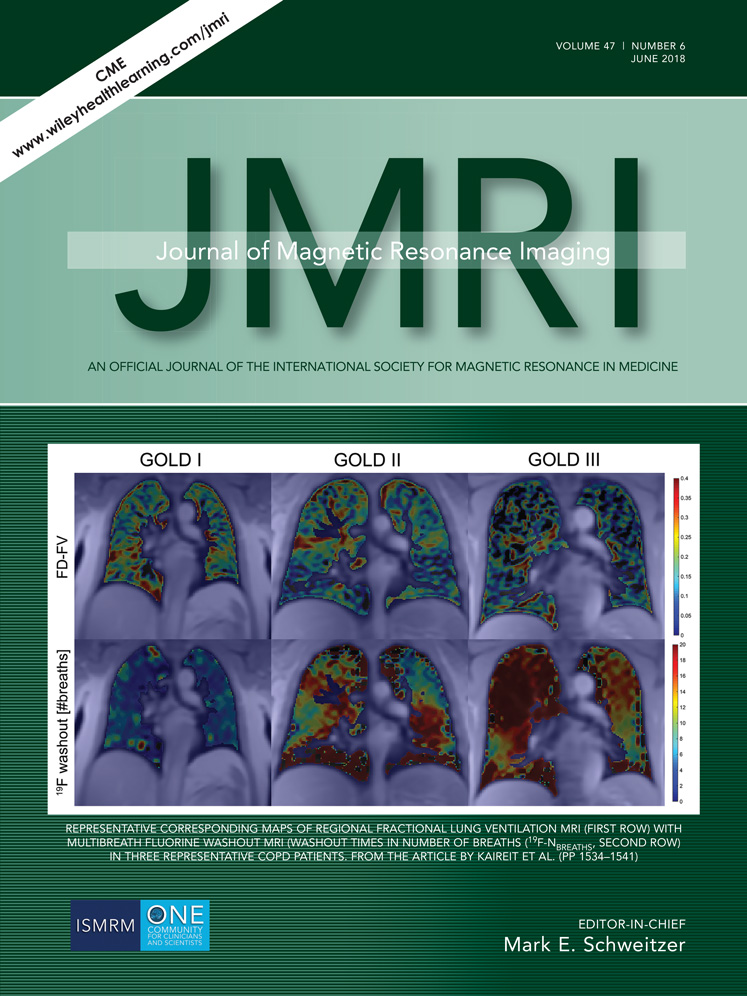Mapping brown adipose tissue based on fat water fraction provided by Z-spectral imaging
Abstract
Background
Brown adipose tissue (BAT) has a great relevance in metabolic diseases and has been shown to be reduced in obesity and insulin resistance patients. Currently, Dixon MRI is used to calculate fat-water fraction (FWF) and differentiate BAT from white adipose tissue (WAT). However, it may fail in areas of phase wrapping and introduce fat-water swapping artifacts.
Purpose
To investigate the capacity of the Z-spectrum imaging (ZSI) for the identification of BAT in vivo.
Study Type
Retrospective study. Specimens: WAT, BAT, and lean tissue from healthy mice. Animals: Four C57BL/6 healthy mice. Population: Five healthy volunteers.
Field Strength
9.4T, 3T for volunteers.
Sequence
Z-Spectra data were fitted to a model with three Lorentzian peaks reflecting the direct saturation of tissue water (W) and methylene fat (F), and the magnetization transfer from the semi-solid tissues. The peak amplitudes of water and fat were used to map the FWF. The novel FWF metric was calibrated with an oil and water mixture phantom and validated in specimens, mice and human subjects.
Assessmemt
FWF distribution was compared with published works and values compared with Dixon's MRI results.
Statistical Tests
Comparisons were performed by t-tests.
Results
ZSI clearly differentiated WAT, BAT, and lean tissues by having FWF = 1, 0.5, and 0, respectively. Calibration with oil mixture phantoms revealed a linear relationship between FWF and the actual fat fraction (R2 = 0.98). In vivo experiments in mice confirmed in vitro results by showing FWF = 0.6 in BAT. FWF maps of human subjects showed the same FWF distribution as Dixon's MRI (P > 0.05). ZSI is independent from B0 field inhomogeneity and fat-water swapping because both lipid and water frequency offsets are determined simultaneously during Z-spectral fitting.
Data Conclusion
ZSI can derive artifact-free FWF maps, which can be used to identify BAT distribution in vivo noninvasively.
Level of Evidence: 1
Technical Efficacy: Stage 1
J. Magn. Reson. Imaging 2018;47:1527–1533.




